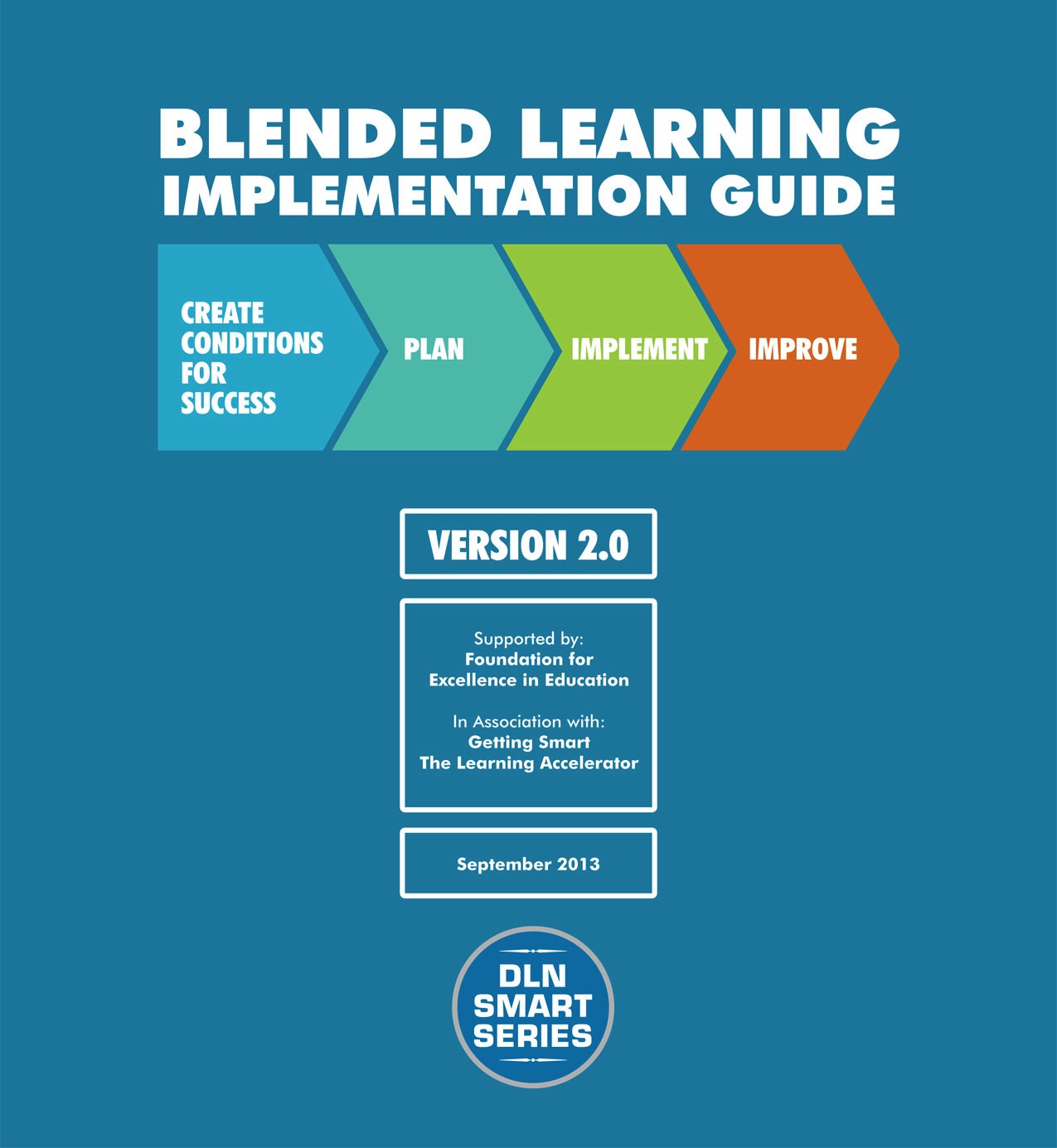
Most districts put “innovation” at the top of their agendas these days, but too few are innovating with a purpose. The Reynoldsburg City School District (RCS) is becoming an exemplar for how to unleash principals’ and teachers’ creativity in meaningful ways that are guided but not prescribed or limited by a central office agenda.
Across RCS, personalization of learning is increasingly achieved at the classroom and individual student level through the shift to blended learning. The district’s new Disruptive Innovation Investment Program (DIIP) expects to accelerate the shift. The DIIP is a school-level grant competition intended to foster new or developing initiatives–including blended learning– that further progress toward financially sustainable academic growth and achievement for all students. While ‘grant competition’ might make it sound like this is a district swimming in money, anyone could do this on any budget. Reynoldsburg is spending about the same in 2014 as it was back in 2005.
DIIP awards are viewed as investments that kick-start or accelerate innovation resulting in higher performance and increased productivity and/or savings over time. The acceptance of a grant award is a commitment to maintain the initiative beyond initial funding and to support the approach within current funding levels. The program encourages a fresh take on the school-level business plan that must account for all the resources used to support operations of the school.
The investment program is clearly in keeping with the district’s vision of being a “system of schools, not a school system.” The district has been evolving its portfolio of unique schools for several years. Going into the 2014-15 school year, principals will have direct control over an estimated 90% of their budgets–the most ever (dollars are pooled for priorities related to safety, capital improvements and to create certain efficiencies)–and this is in addition to control over selection of new staff, the school schedule, curriculum, school theme, instructional and organizational models.
Principal autonomy is essential: They are strictly accountable for school performance, and affording students and parents choices among specialized instructional models is a key component of Reynoldsburg’s success. It is worth noting here that Ohio is a local control state, and that the district has a vital and active local teachers’ union.
How does the Disruptive Innovation Investment Program work?
The overall structure of the RFP asks principals and their design teams to analyze their greatest challenges in-depth, identify new opportunities to address persistent problems, generate promising ideas, and, plan to develop ideas into working prototypes. Collaborative proposals involving consortia of schools and partnerships with outside organizations/agencies or non-Reynoldsburg schools are encouraged.
What are the funds’ absolute priorities?
Proposals must address just two absolute priorities.
Absolute Priority #1: Improving student outcomes. To meet this priority the applicant must define the problem to be solved, set relevant goals and performance measures, and describe how the proposed initiative will directly address the problem.
Absolute Priority #2: Increasing productivity and/or reducing school operating costs. To meet this priority, the applicant must identify areas in the school operational budget where long-term cost-savings will occur. These savings may be achieved by reducing/eliminating expenditures deemed ineffective, no longer needed or less important than the proposed initiative. Savings also may be achieved by replacing expensive line items with less expensive line items. Proposals that generate sufficient revenue to cover increased expenses also will be considered.
How does the fund encourage principals’ best thinking and blended learning designs?
In the Disruptive Innovation section of the application, applicants must explain the problem their proposal will address, and provide evidence that quantifies and/or qualifies the problem and its significance. More akin to business school than ed school, principals outline their hypotheses and must delineate whether they intend to pursue disruptive or hybrid models and why.
Under Organization of Resources, applicants describe how their team will be structured to solve problems, as well as a rationale for this structure. In addition to identifying what their team needs to be successful and the kinds of resources and tools that will be provided, principals have to describe what trade-offs will be necessary to sustain the approach long term. Teams are encouraged to think like engineers –everything should be considered a tool for manufacturing time, extending the reach of talent, or generating savings for better uses/higher purposes. The complete narrative requires articulation of goals & performance measures, implications for scalability and more.
How does the fund build toward a shared vision and language across autonomous schools?
As a way of priming conversations to take place during the consulting phase (see below), the partnership developed an optional reading list with the potential for creating a shared vision and language for what high quality blended learning could look like–without being prescriptive. A few highlights include School Design 101: The Class Schedule is Your Enemy, Secret to organizing teachers for blended learning and Blended Learning Implementation Guide.
How does the district build principals’ and school teams’ capacity for design?
Applicants can access strategy, design and technical support from The Learning Accelerator in preparing their proposals. Consultation can range from one brief meeting to a series of working sessions that focus on the core opportunity with the shift to blended learning: to inspire a rethinking of what teachers, students, and schools do, and how they are organized to do it.
In addition to partaking of consulting hours, some schools are already working on building their own capacity for design and implementation. For instance, a teacher-turned-coach at Waggoner Road Middle School (WRMS) is developing and facilitating a Blended Learning Professional Development Course for all staff to run April through May, delivered in a blended format. Several teachers participated in the Blended Learning: Personalizing Education for Students MOOC that was facilitated by Michael Horn, Brian Greenberg and Rob Schwartz on Coursera in the fall, and WRMS is recreating and customizing that experience for their staff.
What if a school doesn’t receive funds?
While the district will select winners, all applicants will receive extensive feedback on their proposals from district leadership and The Learning Accelerator. The partnership has agreed to contemplate a level of support for any non-winning applicants, after the quality of proposals is known and challenges have been assessed. Despite the awarding of a finite $300,000 for similar grants last year, the district has decided not to cap the amount to be awarded in 2014 and instead, will award as many applicants as are worthy of funding.
How will autonomous schools learn from each other given their high degree of autonomy?
Innovation isn’t a solo sport. Borrowing from successful practice in New York City’s iZone, Affinity Groups of individuals will have the option to meet to share, refine and/or jointly prototype innovative school and system practices. For now, each group will initiate its own focus, process and mission based on the problems they are trying to solve. Part of the district’s work with The Learning Accelerator involves ongoing inquiry as to when district-wide strategies make sense, though always balanced with the highest degree of school autonomy.Li

